Uncover Chinon's vibrant flavors and culinary gems with our expert guides. Plan an unforgettable trip now!
Read more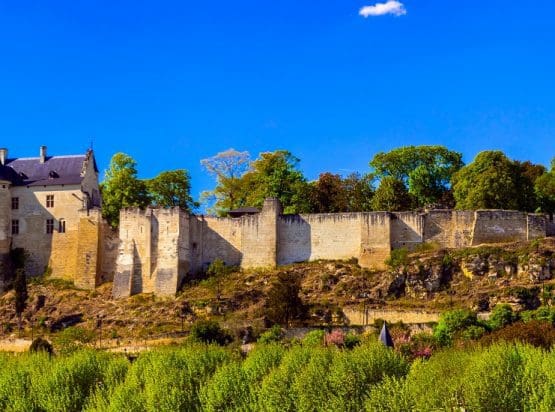
EXPLORE ALL OUR LOIRE VALLEY WINE REGIONS GUIDE
Last updated: April 4, 2025
The living, breathing heart of the Loire Valley does not set its stall on quaffable – and ubiquitous – Sauvignon Blanc. Instead, the white tuffa hills of Anjou (a regional name and umbrella appellation covering Anjou and Saumur) produce exceptional Chenin Blanc whites, ranging from bone-dry Savennières to ultra-sweet Coteaux du Layon. The former reaches an apogee in the cellars of La Coulée de Serrant, where Nicolas Joly coaxes unimaginable depth and complexity out of his biodynamic vines.
Yet this is merely the beginning: delicious sparkling Saumur, juicy Gamay reds, seductive Cabernet Franc, and even full-bodied Cabernet Sauvignon make an appearance. It is also a remarkable place to visit, where Renaissance châteaux give way to the most beautiful undulating landscape, once colonized by the ancient Gauls. It is everything you’d expect from a seminal Loire vineyard and more.
Discover More About French Wine
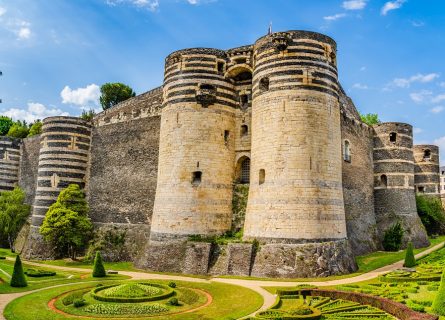
Renowned for its sumptuous châteaux, the glorious Loire Valley is rich in history and architecture. The Romans were the first major civilization to plant vines, settling in the valley after the conquest of Gaul in 52 BC. Their trademark consisted of sweet, adulterated concoctions—they cooked wines in clay furnaces and then added wild herbs, honey, and even salt water to the mix. This tradition persisted until AD 476, when the Western Empire collapsed, and France plunged into endless wars and conflict.
Monastic Wine Cultivation in the Loire Valley
Indeed, the Loire Valley witnessed three of the greatest battles in French history, with the most famous being Charles Martel’s battle against the Moors in 732. Meanwhile, monks planted Chenin Blanc vines at the famous Abbey of Glanfeuil in the 9th century, located south of Anjou’s capital. Known as “Black Angers” due to the dark slate used in its buildings, this riverside city has long been the eastern gateway to the Loire Valley.
In the 1500s, merchants from the Low Countries took advantage of Anger’s favorable location, increasing the area under vine to market substantial volumes of late-harvest dessert wines. As the grapes raisined on the vine into late fall, the sugars concentrated, producing unctuous, golden-colored bottles of fruit-rich sweet wines that became the height of fashion in northern Europe.
Rise of Anjou and Savennières Wines
By the early 1800s, restaurants and taverns in Paris were selling bottles of Anjou and Savennières for princely sums. Meanwhile, the Parisian bourgeoisie increasingly ‘colonized’ the region, driven by their appetite for river-facing châteaux used as second homes in the summer. Observers described this trend as exemplifying la douceur de vivre: a leisurely pace of life, beautiful scenery, and fine food and drink.
Phylloxera and Rejuvenation of the Loire Wine
Unfortunately, the phylloxera louse caused significant damage toward the end of the century; a massive replanting program saved the Loire industry in the 1900s. However, many inferior varieties, including hybrids, were planted out of economic desperation. Thankfully, those days are a distant memory. In 2024, the best of Anjou-Saumur delights and thrills in equal measure.
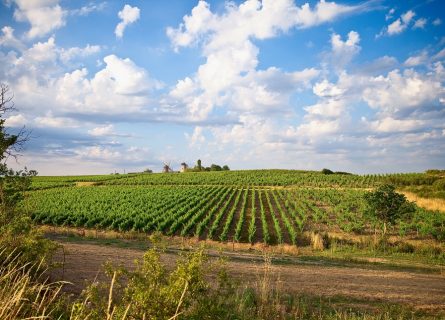
For centuries, the schist and limestone soils of the Middle Loire have been used to fashion an eclectic palate of wine styles, including red, white, traditional-method sparkling, and rosé. Such are the advantages of growing grapes in a temperate climate (warm summers and wet winters), heavily influenced by the Atlantic to the west and the Loire River.
The regions of Anjou and Saumur are a major part of this viticultural scene, as discussed in the same overview, due to their proximity and close historical links. Yet Anjou and Saumur are far more than simply regional clones – the Cabernet Franc wines of Anjou-Villages have little in common with the pungent bubbly of Saumur. Both areas place a high value on the Chenin Blanc grape, known locally as Pineau de la Loire. The wealth and prosperity of Anjou-Saumur have long relied on this versatile grape, perhaps France’s most underrated.
Chenin Blanc and the Importance of Coteaux du Layon
A great deal of Chenin Blanc is cultivated in the vineyards south of Angers, most famously in the subregion of Coteaux du Layon. Here, isolated hills with steep sides (called buttes) enjoy a southwest-facing aspect, which helps to concentrate the sugars as the sun sets over Coteaux du Layon. Drying winds straight off the Atlantic also play an important role in minimizing fungal attacks and other grapevine diseases.
Saumur’s Sparkling Wine Production
Meanwhile, the handsome town of Saumur, lying 30 kilometers upstream of Angers, is a major center of sparkling wine production. The secret to its success is the local tuffeau: chalky white limestone formed millions of years ago from living organisms. This exceptional terroir is porous and permeable, retaining just enough moisture in the summer and yet offering good drainage in the wet spring and fall. The vignoble is found south and southeast of Saumur, with the most privileged sites dotted along the riverside on the south bank.
Tufa Cliffs and Wine Cellars in Saumur Region
For hundreds of years, the creamy tufa cliffs around Saumur have provided a key source of building materials; many of the region’s spectacular châteaux were constructed from this white stone. In addition, the 1500 kilometers of subterranean caves around Saumur were also used as wine cellars to store bottles before disgorgement.
Many of these ancient cellars are still viewable today, including the atmospheric caves of Domaines des Vernes. However, as you move further inland toward St-Cyr-en-Bourg in the south, the local tuffeau is replaced by sandier terrain. These soils can yield a very fragrant and elegant expression of Cabernet Franc, although the most structured white and red wines tend to require high concentrations of tuffeau and low yields.
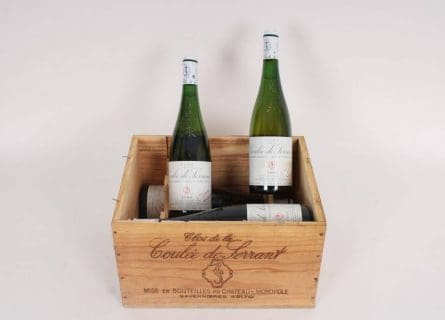
In the 19th century, connoisseurs considered the sweet white wines of the Middle Loire equal to Sauternes. However, winemaking has traditionally been more diverse in this corner of France – some of the finest examples rely on the botrytis mold. In contrast, others focus on concentrating the grapes on the vine.
Today, several appellations in Anjou-Saumur, including Coteaux du Layon and Coteaux de l’Aubance AOC, dedicate themselves to sweet wine production. The former provides the benchmark for sweet Chenin Blanc: the sweetness is always balanced by fresh acid to prevent it from being cloying. The region’s two unofficial ‘Grand Crus,’ Quarts de Chaume and Bonnezeaux, are small subregions that received their own appellation due to the superior quality of their wines.
Loire Dessert Wines
Much like Sauternes, multiple passes through the vineyard are necessary to select sufficiently ripe – or botrytized – grapes and discard unsuitable berries. Then, workers hand-pick the white grapes, transport them to the winery, and crush them. After pressing, the juice moves to a settling tank, and then it ferments in stainless steel vats, cement tanks, or old oak barrels.
Workers then rack, fine, and bottle them in the following spring. The best Loire dessert wines are exquisite, complex, and supple creatures infused with stone fruit and lime flavors. Honeysuckle, quince, and crème brulee aromas will emerge with bottle age. The ultimate pairing is Tarte Tartin.
Dry Chenin Blanc and Savennières’ Unique Terroir
Of course, the market for such glorious wines has shrunk considerably over the past 40 years. Therefore, Anjou-Saumur, particularly in the vineyards of Savennières AOC, is producing a growing volume of seriously fine dry Chenin Blanc. On the north bank of the Loire, limestone soils yield a very dense and powerful expression of the Chenin Blanc grape, capable of aging into velvety splendor.
Biodynamic Winemaking
Within Savennières, two ‘Grand Crus’ have their own appellations: La Roche aux Moines and the famous La Coulée de Serrant. Nicholas Joly and his children manage just seven hectares of biodynamic vines to make Coulée de Serrant. They have always followed their path in terms of winemaking, with minimal use of synthetic inputs (especially sulfur) and prolonged periods of skin contact.
Aged in a maximum of 5 percent new wood, these single-vineyard extravaganzas are deeply phenolic, with great complexity and terroir character. Yet they do not represent the panacea of Savennières wine culture. Many estates advocate for cool vinifications in stainless steel to preserve fruit and freshness, catering to the expectations of contemporary audiences. Additionally, maturation in (some) new wood can greatly flatter Chenin Blanc, provided it is done sensitively.
Anjou’s Mastery of Cabernet Franc
However, superlative white wines, dry and sweet, are not the only trump card of Anjou-Saumur. Local growers are also the masters of Cabernet Franc; Merlot’s blending partner reveals exceptional single-varietal wine in Anjou’s soils, renowned for its striking perfume and velvety texture. The best examples, occasionally blended with Cabernet Sauvignon, are marketed as Anjou-Villages.
Historically, Loire Cabernet Franc was a delicate creature with low alcohol, moderate tannins, an intense aroma, and great freshness. Therefore, they typically conducted fermentation as sensitively as possible: a relatively warm vinification with little maceration once the sugar converted to alcohol. It was common wisdom that Anjou Cabernet Franc could not yield robust, deeply colored, and concentrated red wines, unlike the warmer parts of the New World.
The winemakers aged them in medium-sized barrels and bottled them about 12-14 months after the harvest. Yet climate change is producing richer, riper wines that are increasingly matured in new oak barrels. They have hitherto unseen flesh and muscle on their bones, although traditionalists would argue that they lack Anjou typicité.
The Charm of Saumur’s Sparkling Wines
However, the same cannot be said for Saumur’s invigorating sparkling wines. They remain as delightfully fresh and energetic as ever, made using the traditional method (secondary fermentation in bottle) and aged, in certain cases, for several years before disgorgement. But, unlike Champagne, Chenin Blanc plays a dominant role in white blends, with small amounts of Chardonnay also permitted. It varies from light and quaffable to a more serious expression of the local tuffeau, often incorporating a component fermented in oak and very old reserves. The aromatic rosé version (sparkling Cabernet Franc) has become an absolute favorite in Paris bistros.
There is also a great demand for Saumur still wines in France, particularly the fashionable Saumur-Champigny. Produced from a small enclave of vineyards to the southeast of Saumur town, it is a rival to Anjou Cabernet Franc and often better value. Indeed, this is one of Cabernet Franc’s most lively expressions: a bright, elegant, and floral wine that trades opulence for finesse.
Diversity has become one of the most celebrated attributes in the 21st century, and Anjou-Saumur is way ahead of the curve! For many decades, vignerons in the Middle Loire have marketed a wide variety of styles, catering to fizz fanatics, dessert wine acolytes, and consumers who crave elegant, understated Cabernet Franc.
The emergence of fine dry whites in the 20th century, driven by Savennières Chenin Blanc, has only strengthened the area’s reputation and appeal. Thus, in many ways, Anjou-Saumur is a mirror image of Burgundy, producing fine whites, reds, and some nifty sparkling. Unfortunately, the Loire has never been able to emulate Burgundy’s cachet, much less attract equivalent prices in the secondary market. With the notable exception of Coulée de Serrant and a handful of rare sweet wines, Anjou-Saumur lacks a portfolio of blue-chip collectibles.
Anjou-Saumur vs. Burgundy
Nonetheless, whether Anjou-Saumur is a serious challenger to the Cote d’Or at the moment is a good subject for debate. On the Loire side are a multitude of superb, terroir-driven wines sold at prices that undercut their Burgundian counterparts by a long shot.
Burgundy, on the other hand, scores for taking Chardonnay and Pinot Noir to majestic heights and for the bragging rights that come with opening a bottle of Montrachet or Musigny. From that perspective, little has changed; Anjou-Saumur remains a region driven by consumer interest at ground level rather than collectors and trophy hunters.
Evolution of Loire Cabernet Franc
At the same time, Anjou-Saumur’s vinous identity is in a state of flux. No longer is Loire Cabernet Franc necessarily light and sappy; a combination of global warming, improved viticulture, and lower yields have changed the character of some Anjou reds, creating a more structured and muscular interpretation of the grape. Inevitably, this cannot be to everyone’s taste. Equally, the panacea adopted by some winemakers to add value with an excess of new oak looks dated.
The Future of Anjou-Saumur
The best of Anjou-Saumur is focusing on balance, ensuring that rising alcohol levels are kept in check with good canopy management, judicious levels of extraction, and maturation in used wood. Many of France’s best white and red wines come from Anjou-Saumur, with levels of ripeness and concentration that would have been impossible 40 years ago. But we should always remember that Loire’s greatest gift is elegant fruit expression rather than raw power. Let’s fight to keep it that way.
Chardonnay is a green-skinned grape varietal native to the Burgundy wine region in France and one of the most popular varieties worldwide.
Find out moreChenin blanc is a white wine grape varietal from France's Loire Valley Wine Region. It's a highly versatile grape that produces delicious, light-bodied wines.
Find out moreGamay Noir is a grape variety used to make light-bodied red wine, most notably grown in the Beaujolais region.
Find out moreDiscover the irresistible allure of Cabernet Sauvignon—a worldwide favorite with robust, dark-bodied flavor. Unleash your wine journey today!
Find out moreCabernet Franc grape is a close relative of Merlot and Cabernet Sauvignon and is the principal blending grape used in Bordeaux.
Find out more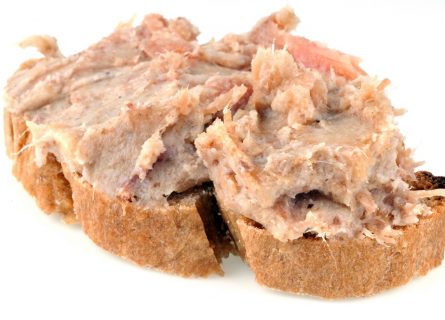
Like many of the Loire’s riverside towns, there is a strong bourgeois sensibility in Angers. As a result, the town is full of excellent restaurants and ambitious chefs, albeit this is not a destination to go hunting for Michelin stars. Nevertheless, Angers boasts a very high overall level of cooking; local menus regularly feature dishes like rillettes (potted meat), coq au vin (chicken cooked in wine), and the exquisite tarte Tatin.
A Gastronomic Guide to the Cuisine of the Loire: Read more
If you would like us to customize an exclusive luxury tour, contact us and let us know your travel plans. We offer luxury food and wine tours for private groups of a mininium two guests. In addition, all of our private, chauffeured tours are available year-round upon request.

